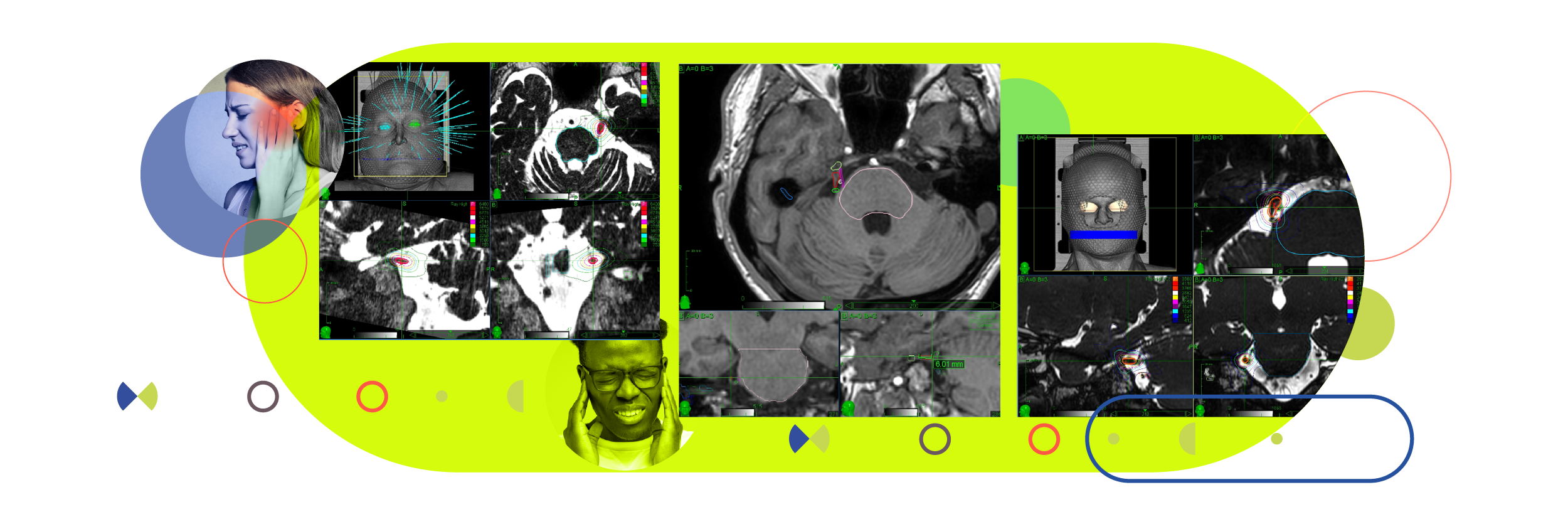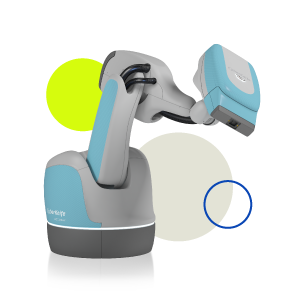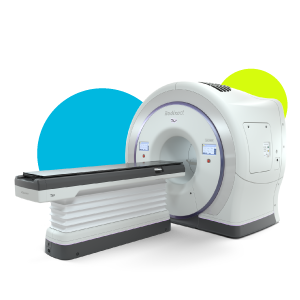We love the theme for ASTRO 2022: “AI & EI: Caring for the patient in a wireless world.” Here at Accuray, we’ve been talking about AI a lot lately — we are excited to share with you our ebook that helps to guide you through it promising potential, remaining barriers, and the exciting path forward for AI in radiation oncology. This year’s ASTRO theme centers on the importance of empathetic, emotionally intelligent care in a healthcare environment that’s increasingly digitized, tech-driven and embracing remote care delivery.
We see the emotional component as more important — not less — in a consumerized, patient-centric, value-based healthcare landscape. So, how do we maximize the benefits of AI and tech-driven care — without the patient care experience becoming cold and emotionless?
Machines can't replace human understanding and care
One of the most exciting and rapidly advancing subsets of AI is emotional AI, also referred to as artificial emotional intelligence or affective computing. Emotional intelligence (EI) in humans is defined as the ability to recognize and manage yours and others’ emotions through self-awareness and emotional influence. Emotional AI is trying to teach EI to machines: taking visual cues from a smile, a frown, a grimace or a confused eyebrow; audio cues from tone of voice and other speech patterns; and pulling emotional cues out of text communications.
This artificial emotional intelligence has tremendous potential for telehealth and other tech-driven care delivery — and we’re excited by these potential applications. But we also strongly believe that AI will never fully replicate and replace human emotional intelligence – for two main reasons:
1. Humans are quite poor at unraveling the complexities of EI
We often struggle to identify our own emotional cues and define our own moods. And while it’s a marvel of the human brain to watch a child learn to recognize and react to others’ emotional cues, we all know that our accuracy in interpreting others’ emotions is not always reliable. Moreover, EI often operates at a subconscious level, making it hard to delineate. Put simply, if you can’t define the cues and responses, you can’t build an algorithm that teaches a machine.
2. Humans instinctively crave human care
EI, humans will retain their innate distance from the ‘care’ provided by a machine. We will always seek the emotional support and empathy provided by a real human over that offered by technology.
How AI will transform EI in healthcare
AI can’t replicate the full human care experience. But it doesn’t have to. Here are three powerful ways that AI will transform the application of emotional intelligence and the delivery of empathetic care in healthcare broadly — and the field of radiation oncology, specifically:
Hyper-personalized treatment recommendations
As we continue collecting more and more data from patients — through connected devices, wearables and integrations with other technologies — this data holds within it the promise of more accurate diagnoses, more personalized treatments and more efficient care. But the human brain simply cannot process the volume and complexity of patient data available today.
AI solves this problem, enabling the real-time digestion and analysis of near-infinite quantities of data. This application of AI is expected to dramatically enhance and accelerate the treatment evaluation process, as algorithms instantly cross-reference robust patient data against clinical evidence to quickly identify a patient’s best treatment options. The result: Every single patient will receive hyper-personalized treatment recommendations that make them feel uniquely supported and cared for.
Predictive treatment outcomes that include quality-of-life considerations
Experienced clinicians know that determining the best course of treatment is not an exact science — it typically includes subjective considerations around what’s most important to the patient. For example, patients may weigh quality of life factors, risk of side effects, and invasiveness or disruptiveness of treatment alongside long-term cancer control and survival rates.
Clinicians can advise patients on these quality-of-life considerations, yet they can’t forecast exactly which patients will experience more significant side effects, or complications from more invasive treatments, etc.
AI is expected to increasingly give clinicians visibility to predictive, patient-specific treatment outcomes, incorporating vast amounts of patient data to offer an objective assessment of a patient’s likelihood of positive and adverse treatment outcomes. This will give patients empowering information as they weigh their treatment options.
Increased clinician capacity to consult about treatment
Algorithms can narrow focus on personalized treatment recommendations, and predictive outcomes can help patients make these decisions. But patients ultimately want to connect with a clinician they trust — and hear expert advice. Perhaps the greatest value of AI is that it will free up much more time for clinicians to deliver this type of expert, empathetic consultation to patients as they navigate treatments.
AI is already automating a huge amount of the tedious, repetitive tasks that absorb as much as 70% of clinicians’ time, according to McKinsey. The expected value of these AI-powered efficiencies will net $150B annually for the U.S. healthcare industry alone by 2026. And in radiation oncology, McKinsey estimates that AI will deliver a 21% time savings for radiation oncologists by 2030. In a healthcare environment where time has remained the biggest barrier to more empathetic, EI-powered care experiences, this tremendous time saving is expected to allow clinicians to spend time walking through treatment options and answering questions. The ability to provide these expert insights and empathetic support will be a tremendous benefit to patient satisfaction, helping patients start a treatment path they’re comfortable and confident in.
Accuray vision:
Developing AI to support clinical decision-making
At Accuray, we’ve been focused on the intersection of AI and EI for the better part of the last decade. We’ve pioneered applications of AI in radiation oncology, including our Synchrony® technology that automatically tracks and adapts delivery to target motion in real-time. Now, we’re focused on advancing AI-powered contouring and segmentation — and using AI to bring real-time adaptive radiotherapy to life. Across all of this, our research and development around AI focuses on supporting — not replacing — the expertise of the clinicians that use our technologies. We’re looking for opportunities to automate manual tasks such as autocontouring with Limbus AI Inc, expand data processing capabilities and give reliable time-savers that open up new possibilities. Not just to provide more emotionally intelligent care experiences, but to make more advanced treatments possible and practical for as many lives as possible.
We’ll be discussing AI during our ASTRO 2022 Symposium – Register here.








